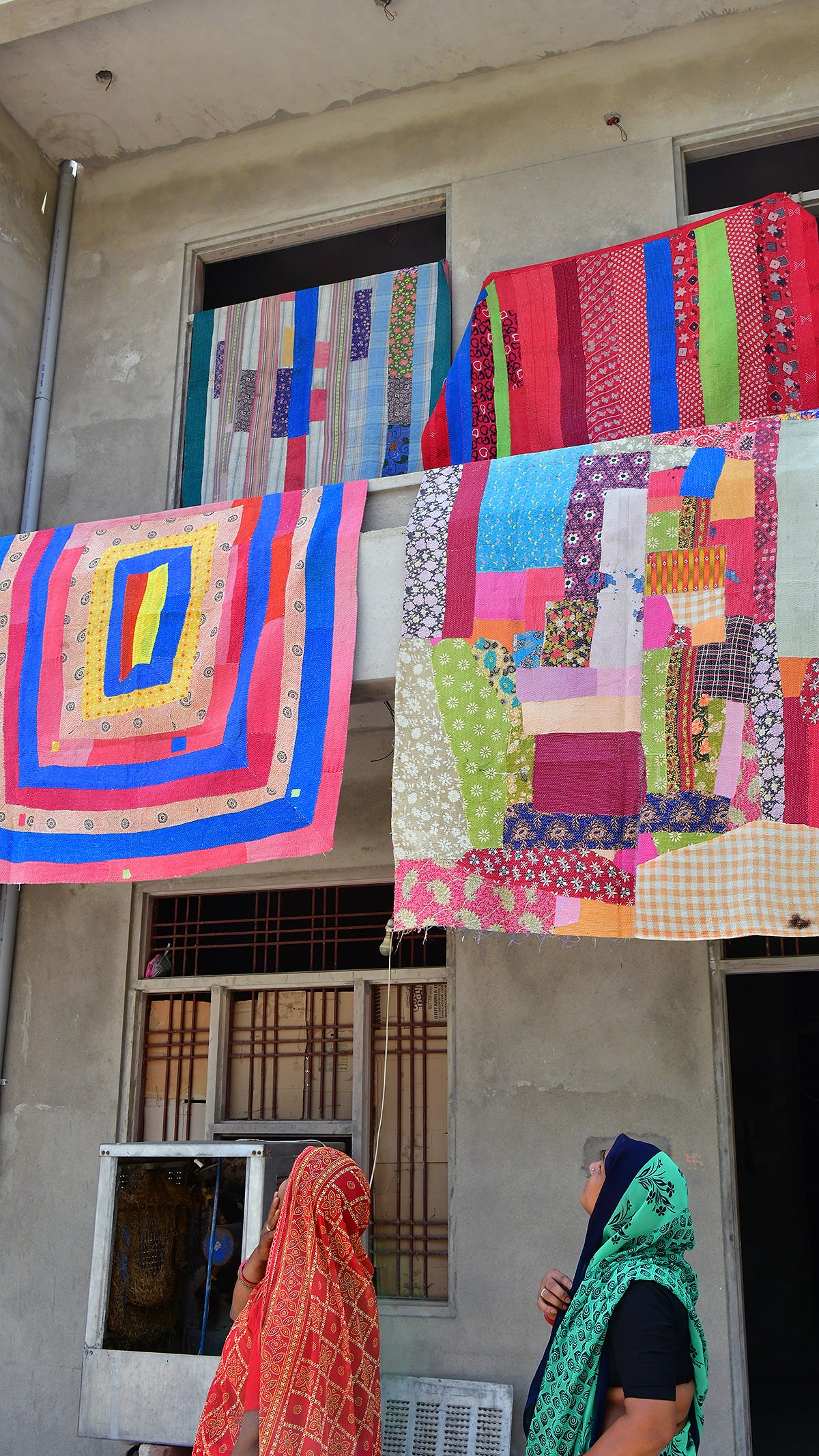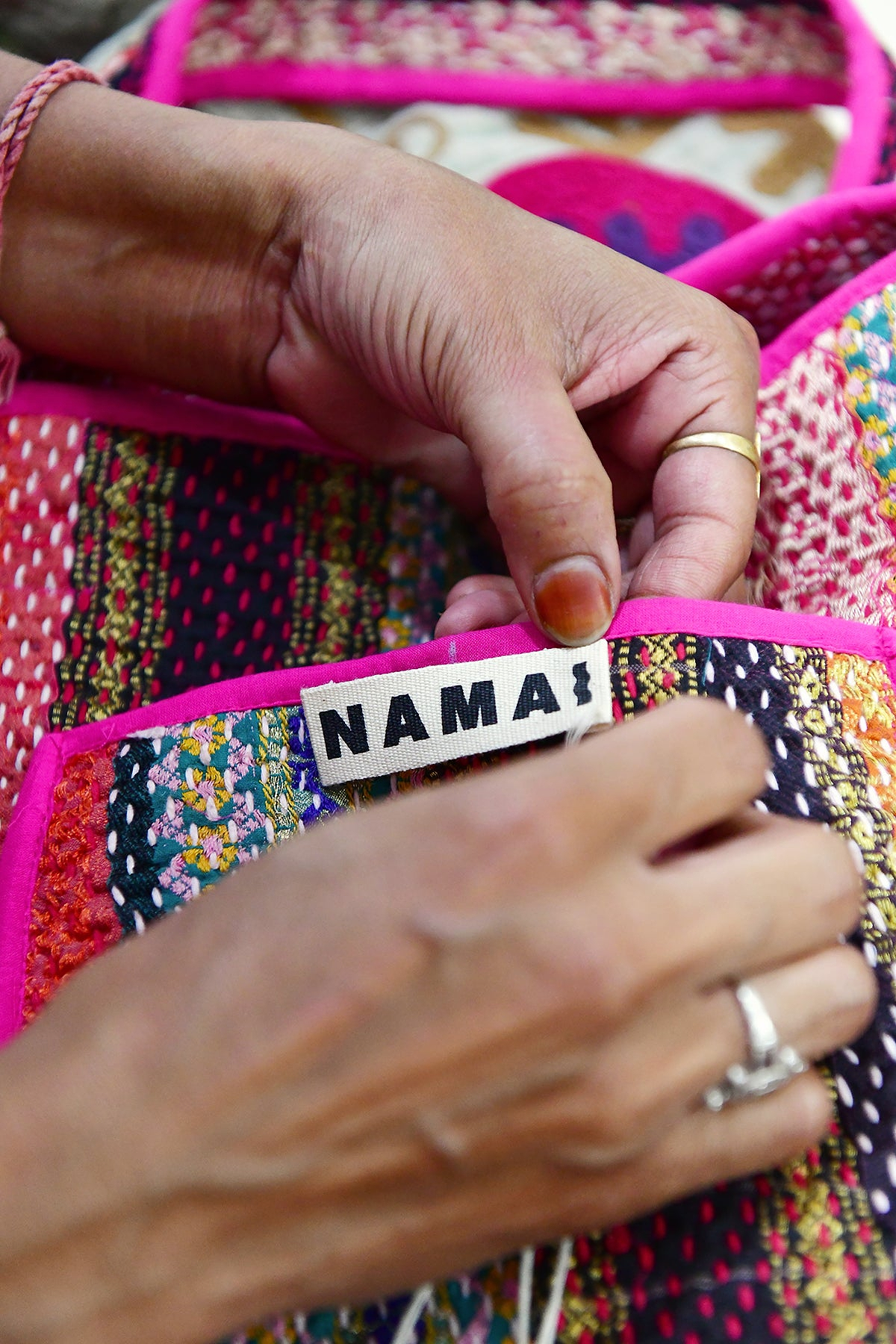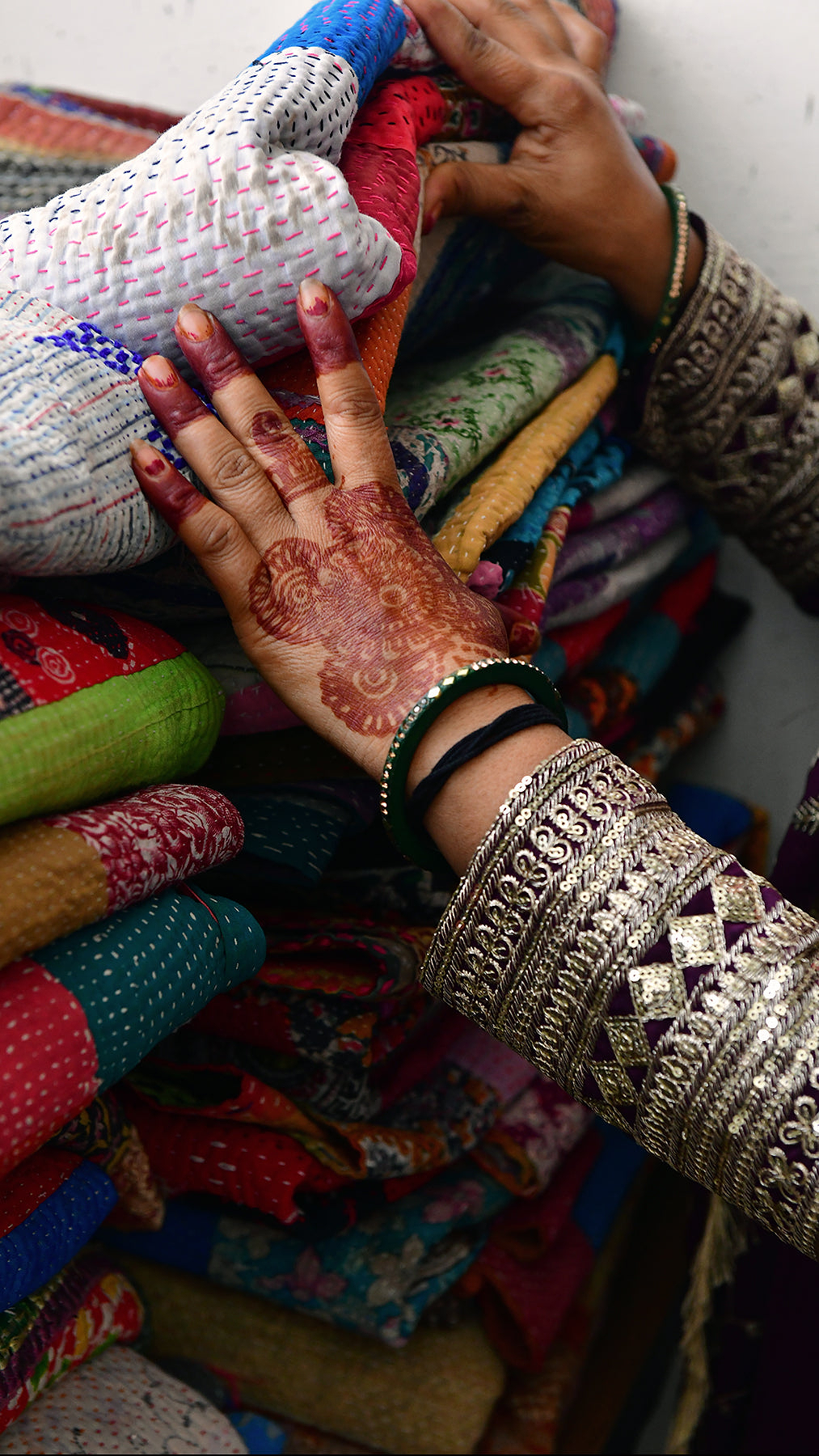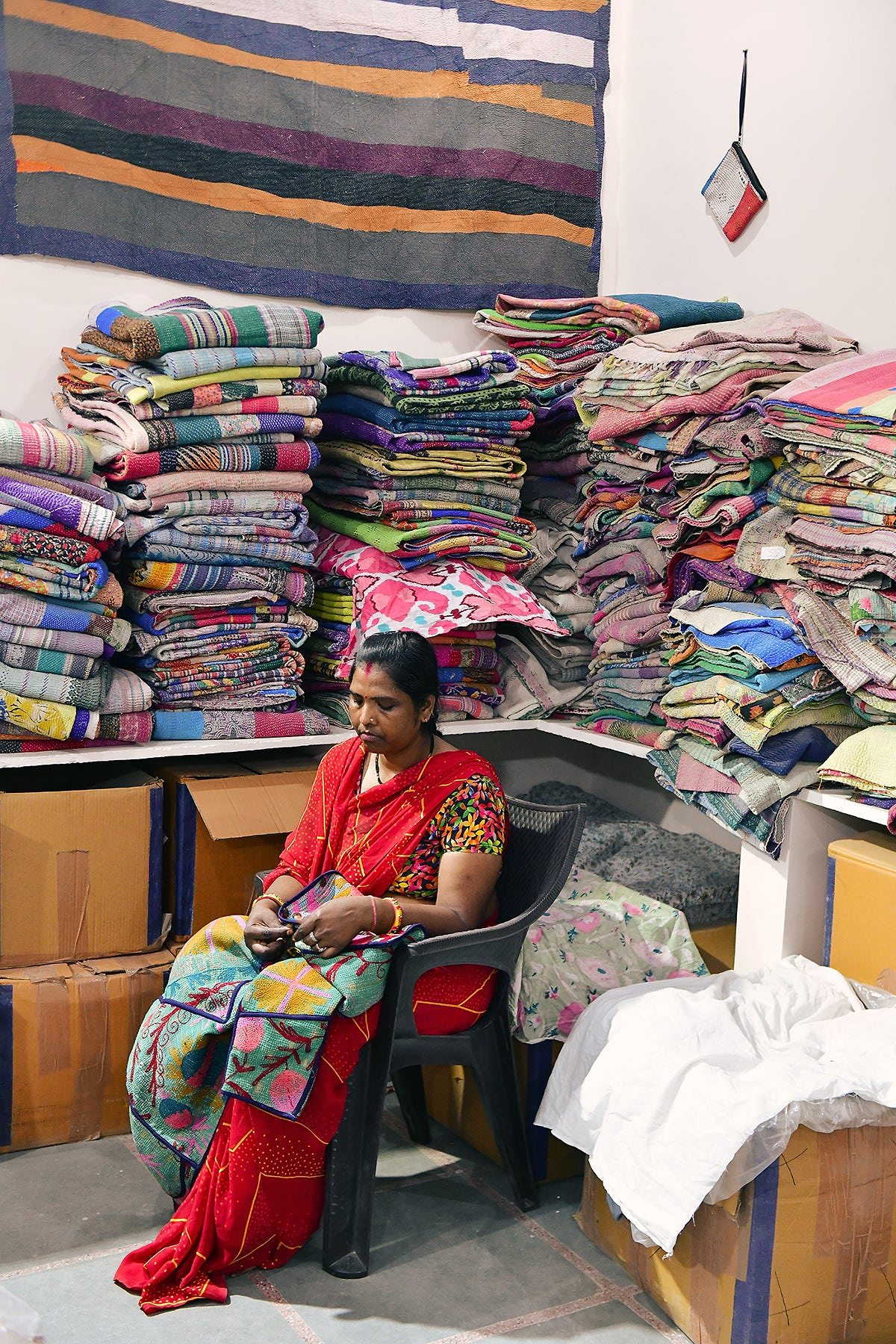
The Heritage of Kantha Quilts
WHY KANTHA QUILTS?
We love Kantha quilts for the stories they carry. Hand-stitched from layers of old saris, each quilt is a living record of memory, tradition, and care—often passed through generations of women. The hand-sewn running stitches not only hold the fabric together but also add rich texture, visible history, and quiet beauty. Their imperfections make them all the more special—no two are ever alike.

WHAT ARE KANTHA QUILTS
Kantha is a centuries-old textile tradition from Bengal (India and Bangladesh), where layers of old saris and cloth scraps are stitched together to create vibrant, reversible quilts. The word "kantha" refers to both the repurposing of old cloth and the signature running stitch used to hold it all together—an act of resourcefulness, artistry, and care.
Kantha quilts have long been made as meaningful gifts in Bengali culture. Traditionally stitched by women for events like childbirth, weddings, or housewarmings, they serve as tokens of care and well-wishing. A bride-to-be might bring a new quilt into her marital household, or a mother might stitch one for her unborn baby. These gifts carry centuries of tradition in every stitch—beautiful, functional, and steeped in ritual and family life.
Each quilt is completely unique, often showing a patchwork of colors, patterns, and signs of wear—all of which add to the beauty and history carried into the garments when they’re repurposed.
HAND SOURCED IN JAIPUR, VINTAGE KANTHA QUILTS ARE UP TO FORTY YEARS OLD.

At NAMAI, every garment begins with a story—one that started decades ago in the hands of women across Bengal.


The Third Life of Every Quilt
By the time a Namai piece reaches your wardrobe, the fabric has already lived two lives:
First, as a sari or garment lovingly worn.
Then, as a quilt—stitched and re-stitched by hand, often passed through generations.
We give it a third life—as a one-of-a-kind garment to be lived in, again. This cycle of transformation is central to our identity: we honor the past, sustain the present, and imagine a more mindful future.


















